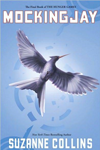
Search
Categories
Famous Authors
Top Selling Books

Book Home ![]() Books Information
Books Information ![]() Two Towers
Two Towers
Two Towers
The Two Towers is the second volume of J. R. R. Tolkien's The Lord of the Rings. It is preceded by The Fellowship of the Ring and followed by The Return of the King.
Title
Tolkien came up with the title under deadline pressure and later expressed dissatisfaction with it. In letters and one sketch he considered several possible sets of towers, including Minas Tirith and the Barad-dûr, and even the possibility of leaving the matter ambiguous. However, he eventually settled on Orthanc and Minas Morgul and wrote a note to this effect which appears at the end of most editions of The Fellowship of the Ring. He also produced a final cover illustration showing these towers, but the publisher decided not to use it in order to save money on the production costs.
Loosely, any pair from a set of five towers in the story could plausibly fit the title: Cirith Ungol, Orthanc, Minas Tirith, Barad-dur, and Minas Morgul.
Structure
Because The Two Towers is the central portion of a longer work, its structure differs from that of a conventional novel. It begins and ends abruptly, without introduction to the characters, explanations of major plot elements or a satisfying conclusion. The first section follows the divergent paths of several important figures from The Fellowship of the Ring, but tells nothing of its central character, on whose fate so much depends, enabling the reader to share in the suspense and uncertainty of the characters themselves. The narrative of the second part returns to the hero's quest to destroy the evil that threatens the world. While the first section tells of an epic battle, the struggles in much of the second section are internal.
Contents
Book III: The Treason of Isengard
Hobbits Merry and Pippin escape from the Orcs who captured them and encounter treelike giants called Ents. These guardians of the forest generally keep to themselves, but are moved to oppose the menace posed to the trees by the wizard Saruman.
Aragorn, Gimli the Dwarf and Legolas the Elf, tracking Merry and Pippin, meet their wizard friend Gandalf, whom they believed had perished in the mines of Moria. He tells them of his fall into the abyss, his battle to the death with the Balrog and his reawakening. The four ride to Edoras and persuade King Théoden that his people are in danger. They travel to the defensive fortification Helm's Deep, where they resist an onslaught of Orcs and Men sent by Saruman, before heading to Saruman's stronghold in Isengard.
There, they reunite with Merry and Pippin and find Orthanc besieged by Ents. After giving Saruman a chance to repent, Gandalf casts him out of the order of wizards. Wormtongue throws something from a window at Gandalf and those with him. This turns out to be one of the palantíri. Pippin, unable to resist the urge, looks into it and has an encounter with Sauron. Gandalf and Pippin then head for Minas Tirith in preparation for the upcoming war.
Book IV: The Journey to Mordor
Frodo and Sam discover Gollum stalking them as they try to reach Mount Doom to destroy the One Ring. Gollum hopes to reclaim the Ring. Sam loathes and distrusts him, but Frodo pities him. Gollum promises to lead them to a secret entrance to Mordor and for a time appears to be a true ally. Eventually, however, he leads them into the lair of Shelob, an enormous spiderlike creature, who inflicts her poisonous bite on Frodo. Sam resolves to finish the quest himself and takes the Ring. But when Orcs take Frodo's body, he follows them and learns that Frodo is not dead but unconscious and now their prisoner.
Adaptations
Some of the events of The Two Towers were depicted in a 1978 film of The Lord of the Rings by Ralph Bakshi and the 2002 The Lord of the Rings: The Two Towers by Peter Jackson. Both films abandoned the parallel storytelling of the book in favour of a more chronological presentation. The first chapter from the book actually appears at the end of Jackson's The Lord of the Rings: The Fellowship of the Ring. Later events of The Two Towers were filmed for Jackson's The Lord of the Rings: The Return of the King. Various games also adapt The Two Towers, including online role-playing games like The Two Towers Mud and graphically-oriented console games.